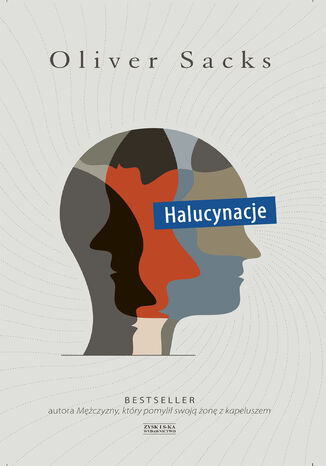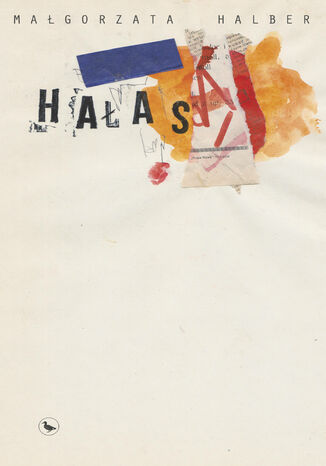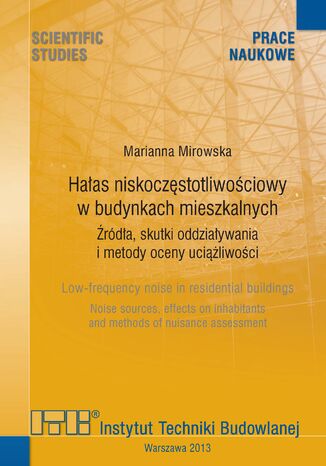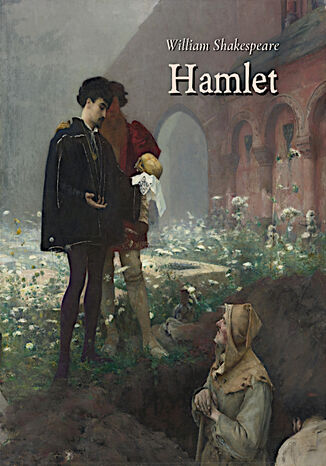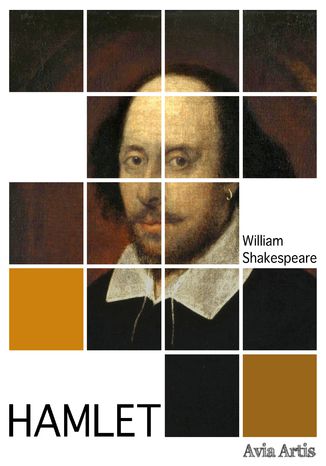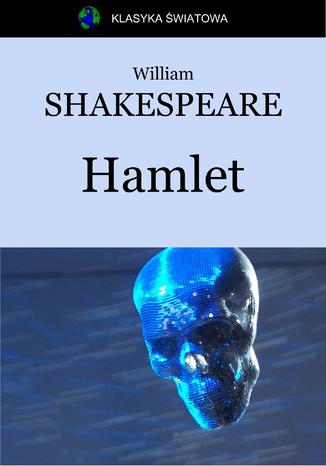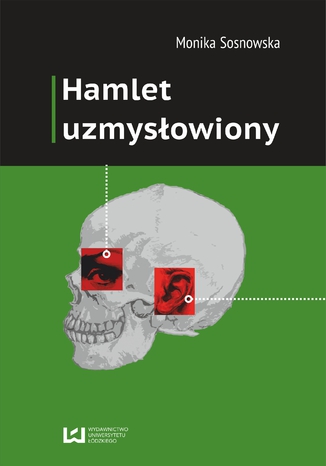Категорії
-
- Біткойн
- Ділова жінка
- Коучинг
- Контроль
- Електронний бізнес
- Економіка
- Фінанси
- Фондова біржа та інвестиції
- Особисті компетенції
- Комп'ютер в офісі
- Комунікація та переговори
- Малий бізнес
- Маркетинг
- Мотивація
- Мультимедійне навчання
- Нерухомість
- Переконання та НЛП
- Податки
- Соціальна політика
- Порадники
- Презентації
- Лідерство
- Зв'язки з громадськістю
- Звіти, аналізи
- Секрет
- Соціальні засоби комунікації
- Продаж
- Стартап
- Ваша кар'єра
- Управління
- Управління проектами
- Людські ресурси (HR)
-
- Architektura i wnętrza
- Безпека життєдіяльності
- Biznes i Ekonomia
- Будинок та сад
- Електронний бізнес
- Ekonomia i finanse
- Езотерика
- Фінанси
- Особисті фінанси
- Бізнес
- Фотографія
- Інформатика
- Відділ кадрів та оплата праці
- Для жінок
- Комп'ютери, Excel
- Бухгалтерія
- Культура та література
- Наукові та академічні
- Охорона навколишнього середовища
- Впливові
- Освіта
- Податки
- Подорожі
- Психологія
- Релігія
- Сільське господарство
- Ринок книг і преси
- Транспорт та спедиція
- Здоров'я та краса
-
- Офісні застосунки
- Бази даних
- Біоінформатика
- Бізнес ІТ
- CAD/CAM
- Digital Lifestyle
- DTP
- Електроніка
- Цифрова фотографія
- Комп'ютерна графіка
- Ігри
- Хакування
- Hardware
- IT w ekonomii
- Наукові пакети
- Шкільні підручники
- Основи комп'ютера
- Програмування
- Мобільне програмування
- Інтернет-сервери
- Комп'ютерні мережі
- Стартап
- Операційні системи
- Штучний інтелект
- Технологія для дітей
- Вебмайстерність
-
- Антології
- Балада
- Біографії та автобіографії
- Для дорослих
- Драми
- Журнали, щоденники, листи
- Епос, епопея
- Нарис
- Наукова фантастика та фантастика
- Фельєтони
- Художня література
- Гумор, сатира
- Інше
- Класичний
- Кримінальний роман
- Нехудожня література
- Художня література
- Mity i legendy
- Лауреати Нобелівської премії
- Новели
- Побутовий роман
- Okultyzm i magia
- Оповідання
- Спогади
- Подорожі
- Оповідна поезія
- Поезія
- Політика
- Науково-популярна
- Роман
- Історичний роман
- Проза
- Пригодницька
- Журналістика
- Роман-репортаж
- Romans i literatura obyczajowa
- Сенсація
- Трилер, жах
- Інтерв'ю та спогади
-
- Археологія
- Bibliotekoznawstwo
- Кінознавство / Теорія кіно
- Філологія
- Польська філологія
- Філософія
- Finanse i bankowość
- Географія
- Економіка
- Торгівля. Світова економіка
- Історія та археологія
- Історія мистецтва і архітектури
- Культурологія
- Мовознавство
- літературні студії
- Логістика
- Математика
- Ліки
- Гуманітарні науки
- Педагогіка
- Навчальні засоби
- Науково-популярна
- Інше
- Психологія
- Соціологія
- Театральні студії
- Богослов’я
- Економічні теорії та науки
- Transport i spedycja
- Фізичне виховання
- Zarządzanie i marketing
-
- Безпека життєдіяльності
- Історія
- Дорожній кодекс. Водійські права
- Юридичні науки
- Охорона здоров'я
- Загальне, компендіум
- Академічні підручники
- Інше
- Закон про будівництво і житло
- Цивільне право
- Фінансове право
- Господарське право
- Господарське та комерційне право
- Кримінальний закон
- Кримінальне право. Кримінальні злочини. Кримінологія
- Міжнародне право
- Міжнародне та іноземне право
- Закон про охорону здоров'я
- Закон про освіту
- Податкове право
- Трудове право та законодавство про соціальне забезпечення
- Громадське, конституційне та адміністративне право
- Кодекс про шлюб і сім'ю
- Аграрне право
- Соціальне право, трудове право
- Законодавство Євросоюзу
- Промисловість
- Сільське господарство та захист навколишнього середовища
- Словники та енциклопедії
- Державні закупівлі
- Управління
-
- Африка
- Альбоми
- Південна Америка
- Центральна та Північна Америка
- Австралія, Нова Зеландія, Океанія
- Австрія
- Азії
- Балкани
- Близький Схід
- Болгарія
- Китай
- Хорватія
- Чеська Республіка
- Данія
- Єгипет
- Естонія
- Європа
- Франція
- Гори
- Греція
- Іспанія
- Нідерланди
- Ісландія
- Литва
- Латвія
- Mapy, Plany miast, Atlasy
- Мініпутівники
- Німеччина
- Норвегія
- Активні подорожі
- Польща
- Португалія
- Інше
- Przewodniki po hotelach i restauracjach
- Росія
- Румунія
- Словаччина
- Словенія
- Швейцарія
- Швеція
- Світ
- Туреччина
- Україна
- Угорщина
- Велика Британія
- Італія
-
- Філософія життя
- Kompetencje psychospołeczne
- Міжособистісне спілкування
- Mindfulness
- Загальне
- Переконання та НЛП
- Академічна психологія
- Психологія душі та розуму
- Психологія праці
- Relacje i związki
- Батьківство та дитяча психологія
- Вирішення проблем
- Інтелектуальний розвиток
- Секрет
- Сексуальність
- Спокушання
- Зовнішній вигляд та імідж
- Філософія життя
-
- Біткойн
- Ділова жінка
- Коучинг
- Контроль
- Електронний бізнес
- Економіка
- Фінанси
- Фондова біржа та інвестиції
- Особисті компетенції
- Комунікація та переговори
- Малий бізнес
- Маркетинг
- Мотивація
- Нерухомість
- Переконання та НЛП
- Податки
- Соціальна політика
- Порадники
- Презентації
- Лідерство
- Зв'язки з громадськістю
- Секрет
- Соціальні засоби комунікації
- Продаж
- Стартап
- Ваша кар'єра
- Управління
- Управління проектами
- Людські ресурси (HR)
-
- Антології
- Балада
- Біографії та автобіографії
- Для дорослих
- Драми
- Журнали, щоденники, листи
- Епос, епопея
- Нарис
- Наукова фантастика та фантастика
- Фельєтони
- Художня література
- Гумор, сатира
- Інше
- Класичний
- Кримінальний роман
- Нехудожня література
- Художня література
- Mity i legendy
- Лауреати Нобелівської премії
- Новели
- Побутовий роман
- Okultyzm i magia
- Оповідання
- Спогади
- Подорожі
- Поезія
- Політика
- Науково-популярна
- Роман
- Історичний роман
- Проза
- Пригодницька
- Журналістика
- Роман-репортаж
- Romans i literatura obyczajowa
- Сенсація
- Трилер, жах
- Інтерв'ю та спогади
-
- Філософія життя
- Міжособистісне спілкування
- Mindfulness
- Загальне
- Переконання та НЛП
- Академічна психологія
- Психологія душі та розуму
- Психологія праці
- Relacje i związki
- Батьківство та дитяча психологія
- Вирішення проблем
- Інтелектуальний розвиток
- Секрет
- Сексуальність
- Спокушання
- Зовнішній вигляд та імідж
- Філософія життя
Halloween: Impreza firmowa opowiadanie erotyczne
Zapadła cisza, nieznajomy pociągnął ją za rękę i pchnął na ścianę kawałek dalej, zaczął całować, gdy tamtych dwóch wyszło zza rogu, jego dłonie błądziły już po jej ciele, a ona schowała się w jego ciemnej marynarce. Miał dłuższe włosy, które teraz zasłaniały jej twarz. Mężczyźni minęli ich szybko, nie zwracając uwagi na kolejną całująca się po kątach parę, a gdy zostali sami, oderwał usta od jej ust i się odsunął. Przepraszam powiedział, uśmiechając się nieśmiało nie chciałem, aby zwrócili na nas uwagę. Drżała, trochę ze strachu, trochę z zimna, które pojawiło się wraz ze wspomnieniami, a trochę przez ten pocałunek, niespodziewany, dobry, przyjemnie zaskakujący. Mężczyzna nie miał stroju, marynarka była ciemna jak u kelnerów, nierzucającą się w oczy. Wyglądał trochę jak ochroniarz, a teraz skinął jej głową i ruszył w stronę, z której wrócili oni. Stała jeszcze chwilę, zdezorientowana. Zatrzymał się i spojrzał na nią. Masz cudowne usta. Odszedł. Serce biło jej mocno, zbyt mocno." Romansu z szefem Emilia unika jak ognia: już kiedyś się sparzyła, ale udało jej się pozbierać i rozpocząć życie na nowo. Jednak gdy dostrzega byłego przełożonego na firmowym balu maskowym z okazji Halloween, a dodatkowo usłyszała coś, czego nie powinna, jest zmuszona skonfrontować się z demonami przeszłości. Tym razem nie jest jednak sama... pomaga jej tajemniczy mężczyzna, który szybko rozbudza jej pożądanie. Kim jest i jak zakończy się ten wybuchowy wieczór?
"Halo? Sprzedaż!" to poradnik nowej psychologii sprzedaży, który sprzeciwia się bezemocjonalnym, nieelastycznym gotowcom mechanicznego i automatycznego sprzedawania. Jego zadaniem jest zainspirować czytelnika do inteligentnej i zorientowanej na człowieka sprzedaży, w której relacja między ludźmi daje podwalinę pod długoterminowy sukces. Tylko ludzka sprzedaż przez telefon buduje prawdziwą wartość i przewagę rynkową oferowanej marki. Zawarte tutaj wskazówki i inspiracje przeniosą sprzedaż czytelnika oraz zdolności wywierania wpływu na nowy, jeszcze wyższy poziom skuteczności. Taki, z którego nie chce się już wracać. Autor poradnika, Aleksander (Olek) Sienkiewicz, od lat związany jest ze sprzedażą, marketingiem i zarządzaniem. Podczas swojej kariery sprzedawał zarówno w kanale B2B, jak i B2C. Na długiej liście produktów i usług, które sprzedawał, znalazły się m.in.: usługi reklamowe, czasy antenowe, produkty licencyjne, praca tymczasowa i doradztwo personalne, produkty ekologiczne, szkolenia, usługi konsultingowe, produkty kosmetyczne i wiele innych. Nieustanny pasjonat skutecznej komunikacji reklamowej w myśl idei, którą przemyca we wszystkich swoich realizacjach: Wyróżniaj się i doradzaj z elegancją. Na co dzień trener sprzedaży i motywacji osiągnięć, współpracujący z firmami zarówno z polskim, jak i zagranicznym kapitałem. Autor unikatowych szkoleń z zakresu nowej psychologii sprzedaży (m.in.: 5 Kroków Skutecznej Sprzedaży, SuperSeller 1, 2) oraz poczytnych artykułów, publikowanych w portalach poświęconych sprzedaży i zarządzaniu. Ma na swoim koncie szkolenia realizowane poza granicami Polski, podczas których na sali miał okazję pracować z uczestnikami z całego świata. Właściciel firmy doradczo-szkoleniowej, działającej pod marką OlekSienkiewicz.pl, partner zarządzający w wielu biznesowych inicjatywach, m.in. współorganizator jednego z pierwszych i największych w Polsce eventów motywacyjnych. Prywatnie mąż, ojciec i pasjonat motoryzacji.
Mr. Barron, a wealthy banker on Broad Street, was sitting in his office when a young newspaperman rushed into his office. It was an ordinary boy who delivered a newspaper every day. The boy came to the banker with urgent news. He claims that two employees behind his back steal money from him. Would he believe a simple guy?
“Halszka” to książka Józefa Ignacego Kraszewskiego, polskiego pisarza i publicysty oraz autora największej liczby wydanych książek w historii literatury polskiej i siódmego autora na świecie pod tym względem. “Halszka” to dramat w trzech aktach, napisana przez jednego z najwybitniejszych polskich pisarzy XIX wieku. “Takie Kniaziów kochanie! — O! biada nam biada! Jeśli z niska wyszedłszy podlecim wysoko — Kniaź orzeł nas uniesie, gdzie nie dojrzy oko — Kniaź orzeł tam zostanie — dziewczyna upada — Na cóż mi było kazać kochać ciebie? I na co brać mnie było z spokojnego domu? Znalazłbyś równą sobie na kniaziowskiém niebie, I żył z nią tak szczęśliwy! bez troski, bez sromu! Jam biedna! Nie myśl Kniaziu, że gdym tobie cała, Siebie i duszę swoją i życie oddała — Żem z sukniami, kobiécy wstyd z siebie zrzuciła? — O! nie — i ja się wstydzę! — Gdy twoi dworzanie — Szydzą, wskazując moje kozacze ubranie; — Krew mi się pali w sercu, w ziemię bym się skryła, Lub gdy wieczorną porą, do twojéj komnaty Idę, a oni w kącie zasiadłszy na czaty — Wołają za mną — A dokąd kozacze? — Myślisz że się nie wstydzę, że wówczas nie płaczę?” Fragment
Halucynacje zawsze odgrywały ważną rolę w naszym życiu umysłowym i w naszej kulturze. Można się nawet zdziwić tym, jak wielką rolę doświadczenie halucynacji odegrało w naszej sztuce, folklorze, nawet religii Czy geometryczne wzorce towarzyszące migrenie i innym dolegliwościom legły u podstaw motywów, które występują w sztuce Aborygenów? Czy to z halucynacji z udziałem liliputów (wcale nie tak rzadkich) zrodziły się elfy, chochliki i krasnale? Czy to nie z przepojonych lękiem nocnych halucynacji, kiedy jakaś obca, wroga istota szarpie nami i nas dusi, zrodziły się wizje demonów, czarownic, złowrogich przybłędów? Czy ekstatyczne ataki, w rodzaju tych, których doświadczał Dostojewski, odegrały jakąś rolę w naszym poczuciu boskości? Czy doświadczenia oderwania od ciała stały się inspiracją do przypuszczeń, że można istnieć także i bez niego? Czy niesubstancjalność halucynacji podsyca wiarę w zjawy i duchy? Dlaczego we wszystkich znanych nam kulturach szukano i znajdowano halucynogenne substancje, które przede wszystkim wykorzystywano do celów sakralnych? Na te i wiele innych pytań z tym związanych próbuje odpowiedzieć Oliver Sacks w swojej najnowszej bestsellerowej książce Halucynacje. Z jednej strony jest ona swego rodzaju antologią halucynacji, w której opisuje on na podstawie konkretnych przypadków doświadczenia i siłę ich wpływu na tych, którzy ich doznają, co pozwala nam uzmysłowić sobie, jak szeroki jest zakres i jak bogate zróżnicowanie doświadczeń halucynacyjnych, stanowiących istotną składową kondycji ludzkiej. Z drugiej natomiast jest próbą odpowiedzi na podstawowe pytanie o źródła i znaczenie halucynacji dla psychiki człowieka, halucynacja bowiem co udowadnia doktor Sacks - to zupełnie swoista kategoria życia świadomości i umysłu.
Nie pamiętam, co miałam zrobić. Nieustannie. Jestem pewna, że nie pamiętam, co miałam zrobić, bo co chwilę muszę coś zrobić w telefonie. Sprawdzić, czy nikt nie napisał na mesendżerze. Sprawdzić maila. Odpowiedzieć na maila. Coś zobaczyć. Tylko nie pamiętam co. Zamówić herbatę na allegro. I coś jeszcze. Nie pamiętam co. Odpowiedzieć na wiadomość mężowi. Czekać, aż mi odpisze. W międzyczasie odpowiedzieć na wiadomość koleżance, z którą ostatni raz rozmawiałam trzy miesiące temu, na temat czegoś, o czym wtedy rozmawiałyśmy. Mam wrażenie, że połowa mojego życia jest wymyślona, ponieważ dzieje się w telefonie, jest powiadomieniami, jest rozmowami, które nie są rozmowami tylko nieustającą możliwością pisemnej rozmowy. To jest taka gra z tabliczki bh "przestań robić to, co robisz"
W monografii przedstawiono wyniki badań uciążliwego hałasu niskoczęstotliwościowego występującego w budynkach mieszkalnych. Omówiono oddziaływanie infradźwięków i hałasów niskoczęstotliwościowych na organizm człowieka w oparciu o dane literaturowe oraz przedstawiono kryteria oceny ich uciążliwości stosowane w różnych krajach. Na podstawie własnych badań doświadczalnych autorka dokonała przeglądu źródeł hałasów niskoczęstotliwościowych występujących w budynkach mieszkalnych w Polsce i zestawiła wyniki pomiarów hałasu od urządzeń instalowanych w budynku, takich jak: pompy w hydrowęzłach, transformatory, wentylatory, klimatyzatory, agregaty chłodnicze itp. Zaprezentowano wyniki wykonanych pod nadzorem autorki badań epidemiologicznych wpływu długotrwałego narażenia na hałas niskoczęstotliwościowy na zdrowie mieszkańców oraz badań laboratoryjnych progów detekcji dźwięków o niskich częstotliwościach. W oparciu o wyniki wykonanych badań autorka proponuje własną metodę oceny uciążliwości hałasów niskoczęstotliwościowych i określa graniczne, bezpieczne i nieuciążliwe dla mieszkańców poziomy hałasu w pomieszczeniach mieszkalnych.
Hałas zawodowy a normy bezpieczeństwa: jakie kroki powinien podjąć pracodawca
Odkryj klucz do zdrowszego środowiska pracy z e-bookiem "Hałas zawodowy a normy bezpieczeństwa: strategie ochrony pracowników". Dowiedz się, jak skuteczne zarządzanie hałasem może zwiększyć wydajność pracowników, zmniejszając stres i poprawiając ogólne samopoczucie. Poznaj metody, które pomogą Ci spełnić obowiązujące normy bezpieczeństwa, chroniąc zdrowie Twoich pracowników i unikając potencjalnych sankcji prawnych. W e-booku znajdziesz odpowiedzi na kluczowe pytania: - Jakie rodzaje hałasu wpływają na Twoich pracowników i jak je rozpoznać? - Skąd pochodzi przemysłowy hałas i jak minimalizować jego źródła? - Jakie skutki dla zdrowia może mieć hałas i jak ich unikać dzięki efektywnym strategiom ochrony? - Jakie są najlepsze praktyki w ocenie i dokumentacji ryzyka zawodowego związanego z hałasem? - Jakie kroki należy podjąć, gdy poziomy hałasu przekroczą dozwolone normy, aby zapewnić bezpieczeństwo pracowników? - Jakie korzyści przynosi redukcja hałasu nie tylko dla pracowników, ale także dla całej organizacji? Każdy pracodawca zobowiązany jest do ochrony swoich pracowników przed szkodliwym wpływem hałasu. Ten e-book wyposaży Cię w narzędzia i wiedzę, by skutecznie wykonać to zadanie, poprawiając jakość życia zawodowego swojego zespołu i budując kulturę bezpieczeństwa w miejscu pracy.
Urodzona na austriackiej prowincji Monika Helfer otwiera wydaną w 2020 roku anjow Hałastrą Iautobiograficzny tryptyk rodzinny, w jakim przygląda się własnym korzeniom. Autorka cofa się tu w czasie do września 1914 roku, czyli wybuchu Wielkiej Wojny, która naznaczyła początek małżeństwa jej dziadków. To ich głównie dotyczy ta historia, utkana z rodzinnych przekazów, domysłów, pytań i wątpliwości. Najłatwiej byłoby przyporządkować tę prozę do popularnego dziś gatunku autofikcji, ale Monika Helfer tka tu literaturę par excellence, której stawką nie jest zrelacjonowanie osobistego życia, lecz uniwersalna opowieść o człowieczeństwie. Może było właśnie tak. A może nieco inaczej zdaje się mówić Helfer opisująca swoich bohaterów ze współczuciem i taktem, jakich mógłby się od niej uczyć niejeden czuły narrator i niejedna czuła narratorka. Wyjątkowość Hałastry tkwi właśnie w jej tonie, z jednej strony sprawozdawczym i nieuzurpującym sobie prawa do wszechwiedzy o bliźnich, z drugiej wrażliwym na coś, co tłumacz tej powieści, Arkadiusz Żychliński, określił w posłowiu jako mikroemocje. Helfer to literacki Vermeer: maluje swój świat z półcieni, drobnych gestów, spojrzeń i milczenia. Nie ma w tej literaturze ideologii ani niczego, co mogłoby podpadać pod jakąkolwiek hasłowość myśli i uczuć, wszystko jest niejednoznaczne, niedopowiedziane, wskazujące, że każdy z nas jest tajemnicą, ale odsłaniające też oczywistą prawdę, o której czasem zapominamy, że w tajemnicy tej nie ma niczego tajemniczego: wszyscy jesteśmy podobni i wszyscy najbardziej potrzebujemy miłości. Przy tym Hałastra mimowolnie wpisuje się w aktualne trendy, jest bowiem opowieścią o ludziach z marginesu, o najbiedniejszych z biednych, do których reszta społeczności odnosi się z mieszaniną lęku i pogardy. Dziadkowie autorki, Josef i Maria Moosbruggerowie, żyli z siódemką dzieci poza granicą wsi, na samym skraju przysiółka, tam, gdzie ziemia była ugorem. Mówiono na nichdie Bagage, czyli hałastra. Nazwa wzięła się od ciężarów przenoszonych kiedyś na barkach, bo ojciec i dziadek Josefa byli najemnymi tragarzami, czyli ludźmi, którzy nigdzie nie przynależą, nie mają porządnego dachu nad głową, ciągną od zagrody do zagrody, pytają o pracę, a latem znoszą do stodół rolników większe od człowieka bele siana; to był najniższy ze wszystkich zawodów, gorszy nawet od parobka. Niemieckiedie Bagagew źródłosłowie ma bagaż, ale przede wszystkim jak wskazuje Żychliński jest pogardliwym określeniem ludzi nisko ocenianych. Oznacza tyle, co motłoch, obdartusy, hołota, chachary czy hałastra właśnie. Polski tłumacz jest bodaj jedynym, który podjął się w tytule gry z tym niejednoznacznym niemieckim słowem, za co należą mu się ukłony francuskie wydanie powieści wyszło pod tytułem Héritages [Dziedzictwo], włoskie I Moosbrugger [Moosbruggerowie], hiszpańskie Los Últimos [Ostatni], angielskie Last House Before the Mountain [Ostatni dom przed górą], który to tytuł, jak trafnie zauważa Żychliński, niepotrzebnie romantyzuje pozbawioną romantyzmu opowieść Helfer. Stosunek do hałastry komplikuje mieszkańcom wsi uroda Marii Moosbrugger, pożądanej przez wszystkich mężczyzn. Kiedy Josef idzie na wojnę, przedstawiciele płci męskiej (od burmistrza, przez nauczyciela, po proboszcza) czują się w prawie, by rozporządzać ciałem opuszczonej mężatki, choćby tylko w teorii. Helfer w subtelny sposób pokazuje, że piękno w patriarchalnej, tradycyjnej społeczności bynajmniej nie jest darem, lecz przekleństwem, zwłaszcza gdy towarzyszy mu temperament. Coś ty taka, żywa? powtarzano Marii z wyrzutem. Bycie żywym konstatuje autorka przed stu laty oznaczało swego rodzaju przewinę. Dziś możemy czuć wdzięczność do naszych babek, które nie dały żywości w sobie zabić i dzięki którym żyjemy pełniej. Pomijając złe pochodzenie, to jest akurat dobry bagaż Moniki Helfer, choć ma on swoją cenę.
Hałaśliwość nawierzchni drogowych
W monografii zaprezentowano zagadnienia związane z całokształtem problemów dotyczących hałaśliwości nawierzchni drogowych. Wyniki pomiarów maksymalnego poziomu dźwięku stanowiły podstawę do oceny metody statystycznego przejazdu (SPB). W monografii przedstawiono nomogramy prezentujące poziomy emisji hałasu drogowego w zależności od charakterystyki nawierzchni, natężenia i struktury rodzajowej ruchu, które mogą być podstawą do obliczenia równoważnego poziomu dźwięku w otoczeniu trasy drogowej.
Hałda. O śląskiej wyobraźni symbolicznej
Książka nie jest sproblematyzowaną rozprawą, lecz zbiorem szkiców i interpretacji. W centrum widzenia autorki znalazły się wiersze, w których obraz hałdy jako najbardziej charakterystycznej ikony czarnego Śląska został potraktowany symbolicznie. Hałda stanowi w nich nie tylko i nie wyłącznie nieusuwalny element krajobrazu, lecz także niesie z sobą o wiele ważniejsze znaki – egzystencjalne oraz etyczne. Hałda jako symbol pejzażu pojawia się w twórczości wielu poetów śląskich. Tutaj przywołano tych najbardziej charakterystycznych i być może dla swojego czasu, a nawet dla literatury na Górnym Śląsku – najważniejszych. Ryzyko hierarchii nie jest moim zamiarem, ponieważ nie o porządek historycznoliteracki chodzi, ale o próbę stematyzowania tego, co do tej pory umykało spojrzeniu krytycznemu. Zobaczyć Śląsk i człowieka zamkniętego w przemysłowym krajobrazie właśnie przez pryzmat jego najoczywistszej ikony – to zderzyć się z niezwykle ważnymi pytaniami o istnienie i jego wartość. Hałdę przywołują w swoich wierszach poeci wybitni i minorum gentium, klasycy dwudziestowiecznej liryki i amatorzy. Nie sposób ich tu wszystkich przywołać, dlatego prowadzone rozważania zostały ograniczone do pierwszego i do drugiego pokolenia autorów literatury polskiej na Górnym Śląsku po roku 1922 – Emila Zegadłowicza (ur. 1888), Włodzimierza Żelechowskiego (ur. 1893) , Wilhelma Szewczyka (ur. 1913), Bolesława Lubosza (ur. 1928), Tadeusza Kijonki (ur. 1936) i Stanisława Krawczyka (ur. 1938). Z ich wierszy (z wyjątkiem utworów autora Ballad, który pozbawił Śląsk zwałów) można wyodrębnić podobne obrazy hałd, mimo że są one opisywane na różnych etapach czasu społecznego. Wśród nich znajdują się między innymi przedstawienia usypisk jako gór życia, które zaskakują rozwijającą się na nich przyrodą; jako miejsc pełniących rolę schronów, bunkrów, składowania amunicji podczas wojennej zawieruchy czy powstań śląskich; jako ustronnych przestrzeni spotkań, bliskości kochanków; jako miejsc biedy, ale także pracy i ocalenia człowieka; jako śmietniki, przestrzenie gromadzenia pokopalnianych odpadów, rzeczy niepotrzebnych i wyrzuconych; jako wzniesienia zanieczyszczające otoczenie i trujące środowisko. Zaprezentowane w książce szkice o śląskich poetach koncentrują się na interpretacji obrazu. Każde jego widzenie kształtuje się natomiast indywidualnie, „ukazuje to, co widzialne, w inny, i od tej pory nieznany sposób”. Interpretacja każdorazowo stanowi najważniejsze narzędzie, poprzez które można dotrzeć do wyobraźni twórców. Przywoływany w pracy kontekst historyczno-literacki pojawia się – by tak rzec – przy okazji, jest wzmocnieniem interpretacyjnych tez.
Przyznam się oddałam głos moim Czytelnikom. Każda taka młoda osoba to skarbnica spostrzeżeń, refleksji, przygód, wyobrażeń i wskazówek. Żebyśmy tylko my, dorośli, zechcieli zatrzymać się: posłuchać, pomyśleć, uśmiać się czy otrzeć łzę Żebyśmy lepiej rozumieli. Pocieszyli. Potrafili poprowadzić, nie ograniczając wielkiej potrzeby wolności i tworzenia. Żebyśmy chcieli pomóc i podać rękę mniejszemu, słabszemu, zależnemu od nas. Te wypowiedzi to nasze lustro; bez trudu odnajdziemy w nim odbicie naszych dorosłych czynów, słów, myśli i zamiarów. Kim są współczesne dzieci? Na to pytanie odpowiada książka Barbary Stenki Hamak ze stanika. Publikacja jest rodzajem dialogu z dziećmi, które dzielą się refleksjami i spostrzeżeniami dotyczącymi ważnych spraw. Mówią o relacjach z rodzicami i rówieśnikami, szkole, pasjach i marzeniach, lęku i radości. Zdradzają sekrety, jakie towarzyszą ich dorastaniu. Ich refleksja nad światem bywa dojrzała i zaskakująca. Autorka zestawia dwa światy. Świat swojego dzieciństwa Anno Domini 1981 (każdy rozdział otwiera wspomnienie dzieciństwa autorki) ze współczesnością dzieci 2017 roku. Można z radością zanurzyć się w tych wspomnieniach i przywołać własne. Rozmowy z dziećmi w gabinecie terapeutycznym i grupach, które prowadzę utwierdzają mnie w przekonaniu, że dzieci bardzo potrzebują naszego zainteresowania. Tak jak wielu dorosłych pragną być wysłuchane, nie oceniane. Chciałyby nie czuć się tak samotne i bezradne wobec trudności, jakie niesie los. Jedno dziecko marzy o morskiej desce klozetowej, inne chciałoby opłynąć na jachcie świat i zabrać w ten rejs przyjaciół. Różnimy się marzeniami ale nie potrzebą miłości, bezpieczeństwa i samorealizacji. Polecam tę lekturę wszystkim, którzy chcą lepiej zrozumieć dzieci i odnaleźć dziecko w sobie. Jak również młodym czytelnikom, aby zobaczyli, że czasem myślą i czują podobnie. Książkę czyta się z zainteresowaniem. Jej lektura nastraja optymistycznie, bo każda wypowiedź to zalążek życia młodego człowieka, pełnego wiary, że wszystko może się zdarzyć. Justyna Święcicka Psycholog
Hamburg DOM: Obserwowani opowiadanie erotyczne
Ktoś idzie mruczy znów, a ona niemal wyje. Jest na skraju, nie chce przestawać. Rzuca okiem w bok, para zbliża się nieśpiesznie, a ona zdaje sobie sprawę, że muszą wiedzieć, co właśnie robią na ławce, to jest zbyt oczywiste. Marek porusza się pod nią, jego dłonie zaciskają się mocniej na pośladkach. Widzą mówi, jego oddech owiewa jej policzek i patrzą. Para praktycznie stoi. Kamila zerka na nich. Wiedzą. Zatrzymali się i patrzą. Mężczyzna kiwa jej nagle głową, nieznacznie, kobieta ma lekko otwarte usta, Kamila widzi obłoczek pary, który się z nich unosi. Dokończ. Nie musiał tego mówić. Świadomość, że są obserwowani, że ta obca, zupełnie obca para stoi i patrzy, działa na nią jak obłędny afrodyzjak." Jak wygląda jeden z największych jarmarków Europy od drugiej strony? Setki pracowników obsługują turystów, którzy rok w rok odwiedzają Hamburski DOM". Ona przyjechała dorobić, on żyje w tym miejscu od lat. Ich drogi krzyżują się, na chwilę, na moment. Oboje wiedzą, że to tylko wakacyjna przygoda, ale czasem nawet ona może zmienić czyjeś życie. Czasami trafia się na człowieka, który mimo że pojawia się na chwilę, wywiera wpływ na długie lata. Zostaje wspomnieniem, które nigdy nie umiera. Czy takim mężczyzną jest Marek? I jakie fantazje zrealizuje z nim Kamila?
Ona i on. Klasyka? Ależ jaka znów klasyka? Ona Polka, on Kabyl. Oboje w Paryżu. On bez prawa pobytu, ona... A to się jeszcze okaże. Mnóstwo zdarzeń, zderzeń i zaskoczeń. Śmiechu, łez i emocji. Słowem: Hamlaghkem. Hamlaghkem. Kuskus, ciasto ze świni i wino do kolacji. Żeby dowiedzieć się, co oznacza tytuł, trzeba przeczytać książkę do ostatniej strony. Ale warto byłoby to zrobić, nawet gdyby wyjaśnienie znajdowało się na samym początku.
Akcja sztuki rozgrywa się prawie w całości na zamku króla Danii w Elsynorze (Helsingør) i rozpoczyna się po nagłej śmierci króla Hamleta. Na tron wstępuje jego brat Klaudiusz i żeni się z wdową po Hamlecie – królową Gertrudą. Do kraju wraca z Wittenbergi syn zmarłego króla, również Hamlet. Zrozpaczony po śmierci ojca książę jest dodatkowo zgorszony postępowaniem matki, która wyszła za jego stryja niedługo po śmierci poprzedniego męża (w czasach Szekspira było to uznawane za kazirodztwo). Tymczasem na zamku zaczyna pojawiać się duch zmarłego króla Hamleta. Poinformowany o tym przez swego przyjaciela Horacego i oficerów straży książę spotyka się z Duchem. Ten wyznaje młodemu Hamletowi, iż został zabity przez brata – obecnego króla i każe synowi przysiąc, że zostanie przez niego pomszczony; zakazuje mu jednak mścić się na matce. Hamlet ma wątpliwości, czy Duch mówił prawdę, mógł być przecież diabłem, który przybrał jedynie postać jego ojca, by go oszukać i sprowadzić na złą drogę. Postanawia znaleźć dowody zbrodni. Przybiera pozę niezrównoważonego psychicznie szaleńca, który popada w apatię, przerywaną niekontrolowanymi wybuchami. Ma mu to dopomóc w śledzeniu poczynań stryja oraz uśpieniu jego czujności. Nie wiadomo do końca, czy objawy szaleństwa to tylko poza, czy wywołane są rzeczywiście przez szaleństwo (Hamlet myśli o samobójstwie). (Za Wikipedią) A co było dalej, dowie się czytelnik po przeczytaniu całej sztuki. Życzymy przyjemnej lektury!
William Shakespeare (Szekspir)
HamletKrólewicz duński OSOBY: KLAUDIUSZ — król duński HAMLET — syn poprzedniego, a synowiec teraźniejszego króla POLONIUSZ — szambelan HORACY — przyjaciel Hamleta LAERTES — syn Poloniusza WOLTYMAND, KORNELIUSZ, ROZENKRANC, GILDENSTERN, OZRYK — dworzanie KSIĄDZ MARCELLUS, BERNARDO — oficerowie FRANCISKO — żołnierz RAJNOLD — sługa Poloniusza ROTMISTRZ POSEŁ DUCH ojca Hamleta FORTYNBRAS — książę norweski GERTRUDA — królowa duńska, matka Hamleta OFELIA — córka Poloniusza Panowie, damy, oficerowie, żołnierze, aktorowie, grabarze, majtkowie, posłowie i inne osoby. [...]William Shakespeare (Szekspir)Ur. 1564 r. w Statford-upon-Avon Zm. 23 kwietnia 1616 r. w Statford-upon-Avon Najważniejsze dzieła: Ryszard III (1590-93), Sen Nocy Letniej (1595), Romeo i Julia (1595), Henryk IV (1596-98), Hamlet (1601), Otello (1604), Makbet (1606), Król Lir (1606), Burza (1611) Wybitny dramaturg, aktor, reformator teatru i poeta. O oryginalności Shakespeare'a decydowało łączenie wątków tragicznych z komicznymi, scen fantastycznych z realistycznymi, kreacja wyrazistych i złożonych charakterów postaci, które weszły następnie do kanonicznego języka kultury europejskiej, wreszcie poetycka zręczność, filozoficzna głębia i przystępności tekstów. Autor około 200 utworów, przetłumaczonych na najważniejsze języki nowożytne i inscenizowanych na całym globie. Ogromną sławę zyskał dopiero po śmierci. W latach 1590-1610 przebywał w Londynie; od 1594 był członkiem kompanii Sług Lorda Szambelana (potem: Sług Królewskich), dysponującej własnym teatrem The Glob. Cykl Sonetów napisanych już po powrocie w rodzinne strony (1609) należy do arcydzieł literatury angielskiej. autor: Karolina Strzelczak Kupując książkę wspierasz fundację Nowoczesna Polska, która propaguje ideę wolnej kultury. Wolne Lektury to biblioteka internetowa, rozwijana pod patronatem Ministerstwa Edukacji Narodowej. W jej zbiorach znajduje się kilka tysięcy utworów, w tym wiele lektur szkolnych zalecanych do użytku przez MEN, które trafiły już do domeny publicznej. Wszystkie dzieła są odpowiednio opracowane - opatrzone przypisami oraz motywami.
Na duńskim zamku w Elsynor umiera król Hamlet. Wkrótce potem władzę w państwie obejmuje brat zmarłego Klaudiusz, który za żonę bierze owdowiałą bratową. Tymczasem do zamku przyjeżdża syn króla Hamleta, o tym samym imieniu. Księciu ukazuje się duch zmarłego ojca, który wyjawia mu prawdziwe okoliczności swojej śmierci. Młody Hamlet postanawia pomścić zamordowanego króla. Jednak zaczynają targać nim emocje i wątpliwości... Będzie musiał dokonać wyboru, który na zawsze odbije się na jego życiu. "Hamlet" to jedna z najsłynniejszych tragedii wszechczasów. Jest także jednym z najchętniej wystawianych dramatów na scenie światowych teatrów, a zagranie tytułowej roli jest dla aktora największym wyróżnieniem i zarazem największym wyzwaniem.
”Hamlet” to tragedia Williama Shakespeare’a (znana również jako Tragedia Hamleta, księcia Danii). Jest to jeden z najbardziej znanych dramatów oraz arcydzieło teatru elżbietańskiego. „Hamlet” jest jednym z najczęściej granych utworów teatralnych, a rola Hamleta – ze względu na objętość tekstu, dużą ekspresję i bogatą osobowość postaci – uważana jest za sprawdzian dojrzałości i umiejętności aktorskich.
William Shakespeare (Szekspir)
Hamlet (ang. The Tragedy of Hamlet, Prince of Denmark; Tragedia Hamleta, Księcia Danii) tragedia Williama Szekspira napisana na przełomie XVI i XVII wieku, jeden z najbardziej znanych dramatów, arcydzieło teatru elżbietańskiego. Od samego powstania Hamlet jest jednym z najczęściej granych utworów teatralnych, a rola Hamleta ze względu na objętość tekstu, dużą ekspresję i bogatą osobowość postaci uważana jest za sprawdzian dojrzałości i umiejętności aktorskich. Z Hamleta pochodzi zapewne najpopularniejszy monolog, zaczynający się od słów Być albo nie być. (Wikipedia)
Dramatyczna opowieść o władzy, szaleństwie, zawiści, zbrodni i... miłości. Duch poprzedniego króla Danii zdradza swemu synowi, młodemu królewiczowi Hamletowi tajemnicę o morderstwie, którego padł ofiarą. Hamlet symuluje obłęd, aby upewnić się w intencjach nowego króla i dowieść mu popełnionych czynów, a następnie zrealizować ojcowskie zalecenie i dokonać zemsty.
Hamlet. Lektura z opracowaniem
Kompletne wydanie Hamleta Williama Szekspira w klasycznym tłumaczeniu Józefa Paszkowskiego, bez cięć w treści, przygotowaliśmy z myślą o uczniach - nie tylko zastosowaliśmy czcionkę ułatwiającą czytanie oraz wygodne marginesy, dzięki czemu wzrok nie męczy się szybko, ale także uzupełniliśmy tekst o przypisy, wyjaśniające trudne lub archaiczne zwroty. Ponadto wydanie zawiera opracowanie z biogramem autora, streszczeniem, kluczową dla utworu problematyką oraz najważniejszymi pojęciami z zakresu literaturoznawstwa, które dotyczą Hamleta oraz epoki, w której powstał. Opracowanie pomoże nie tylko w przygotowaniu do lekcji i do sprawdzianu, ale także będzie doskonałym materiałem powtórkowym przed egzaminem maturalnym. Seria Lektury wydawnictwa Pumilio powstaje pod opieką merytoryczną redaktorki prowadzącej, dr Agnieszki Wójtowicz-Zając, literaturoznawczyni, która dba o wysoki poziom opracowania tekstu, zgodny z podstawą programową.
The plot holds in suspense, and the final and in general a complete delight. A lot of wise thoughts. The writers and critics have dismantled this work not only by the lines, but by letter, giving each a special meaning. But the average reader will find here a lot of everyday life truths, which are relevant in todays time. Hamlet is one of those works that can be read many times and each time open it to yourself again.
Hamlet uzmysłowiony nie jest ścisłą analizą tekstu, nie jest też stricte pracą z zakresu filmoznawstwa, ale raczej projektem z pogranicza orientacji badawczych, który uwzględnia różnicę pomiędzy reprezentacjami zmysłów w dwóch wymiarach funkcjonowania Hamleta w kulturze, z dodatkowym istotnym rozróżnieniem – wpływem różnicy płci poszczególnych postaci dramatu na reprezentacje doświadczeń angażujących zmysły. Rezultatem badawczym jest takie spojrzenie (by posłużyć się określeniem o zabarwieniu wizualnym) na uzmysłowiony dramat Szekspira, które potencjalnie może zaznaczyć się na polu badań nad Hamletem jako praca łącząca perspektywę genderowo-feministyczną z elementami antropologii kulturowej. Badania, które podejmują problematykę reprezentacji zmysłów na poziomie tekstu oraz na ekranie filmowym, to próba połączenia dwóch wymiarów funkcjonowania Hamleta, mianowicie w kulturze wczesnej nowożytności (tekst) oraz w kulturze współczesnej (film).
Klara Nowakowska Niska rozdzielczość Hamowanie Manewr dłoni nad otwartą książką: jej rzeczy zamienione w motyle, jaszczurki, jej paniczna czujność rozstrojona śmiechem na zakręcie snu. ----- Ta lektura, podobnie... Klara Nowakowska ur.1978 Najważniejsze dzieła: Zrosty (1999), Ulica Słowiańska (2012), Niska rozdzielczość (2013) Poetka. Mieszka we Wrocławiu, co znalazło odzwierciedlenie w pełnym lokalnego kolorytu tomiku Ulica Słowiańska. Jeden z jej wierszy zapisano zresztą na wspomnianej ulicy na płycie chodnikowej. Laureatka Nagrody Głównej IV Ogólnopolskiego Konkursu Poetyckiego im. Jacka Bierezina 1998 za projekt tomu Zrosty, nominowana do Wrocławskiej Nagrody Poetyckiej Silesius 2014 w kategorii książka roku za tom Niska rozdzielczość. Większość jej wierszy hołduje poetyce minimalizmu. Kupując książkę wspierasz fundację Nowoczesna Polska, która propaguje ideę wolnej kultury. Wolne Lektury to biblioteka internetowa, rozwijana pod patronatem Ministerstwa Edukacji Narodowej. W jej zbiorach znajduje się kilka tysięcy utworów, w tym wiele lektur szkolnych zalecanych do użytku przez MEN, które trafiły już do domeny publicznej. Wszystkie dzieła są odpowiednio opracowane - opatrzone przypisami oraz motywami.





